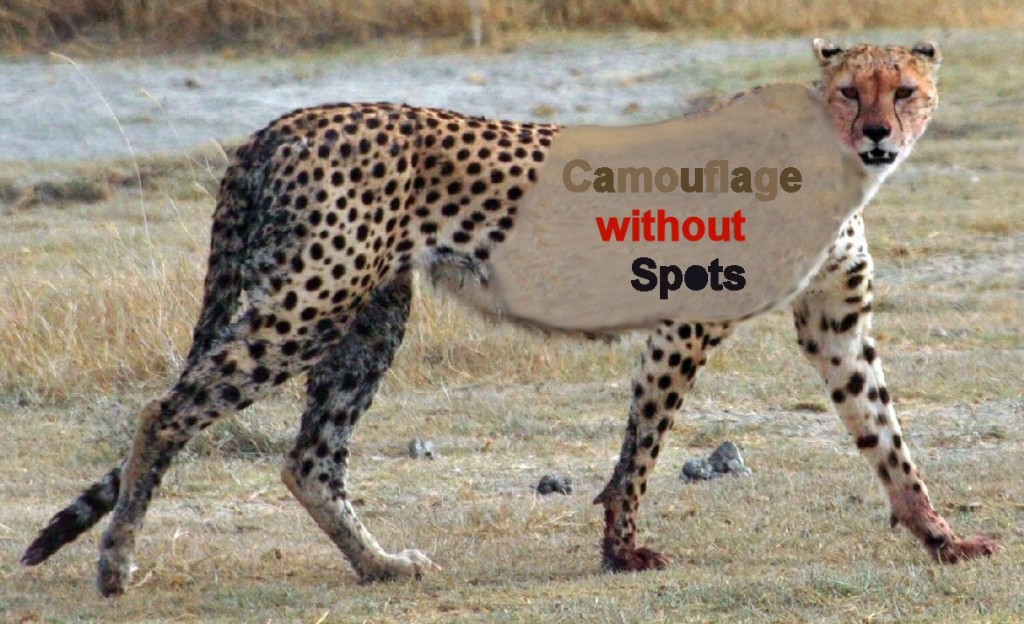
Free Talk: Gunnersbury Triangle, Sunday 8 June 2014 at 2pm
In this short and I hope lively talk, illustrated with models and photographs, I will try to show that camouflage is a lot more than spotty coats.
Animals use many different tricks to hide themselves. Even when there is no cover to hide behind, animals find ingenious ways to make themselves invisible. And if they don’t need to hide, they use the same tricks in reverse to make themselves as obvious as possible.
“Suitable for ages 8 – 80”. Roughly.
OK, you want more technical detail. Hmm. Well, I shall not be talking about military camouflage, though it is (or should be) based on the same principles as in zoology. The title already promises no spots, more or less, so I shall obviously mostly be avoiding what my hero Hugh Cott called disruptive patterns. Yes, you can see that I’ve spent far too much time trying to improve Wikipedia’s coverage of camouflage. If you nose about in there you’ll discover that I’ll have plenty of spotless methods to talk about. To whet your appetite, here’s Hugh Cott’s beautiful drawing of a Potoo, which makes itself as good as invisible by perching, stone-still, atop a broken branch. I’ll leave it up to you to work out how the trick works. Even better, come along to my talk.

